Getting their newly purchased, 2010-built, detached home off the electricity grid was a dream for Amelie Caron and her husband Darren Huckabay, based in Airdrie, Alberta. They started their home energy efficiency journey with an EnerGuide Rating of 141 GJ. After a home retrofit, the couple reduced their house’s energy consumption to 30 GJ — a 79 per cent reduction!
Read on to find out how they did it without opening a single wall!
You can also check out this video documenting their retrofit journey:
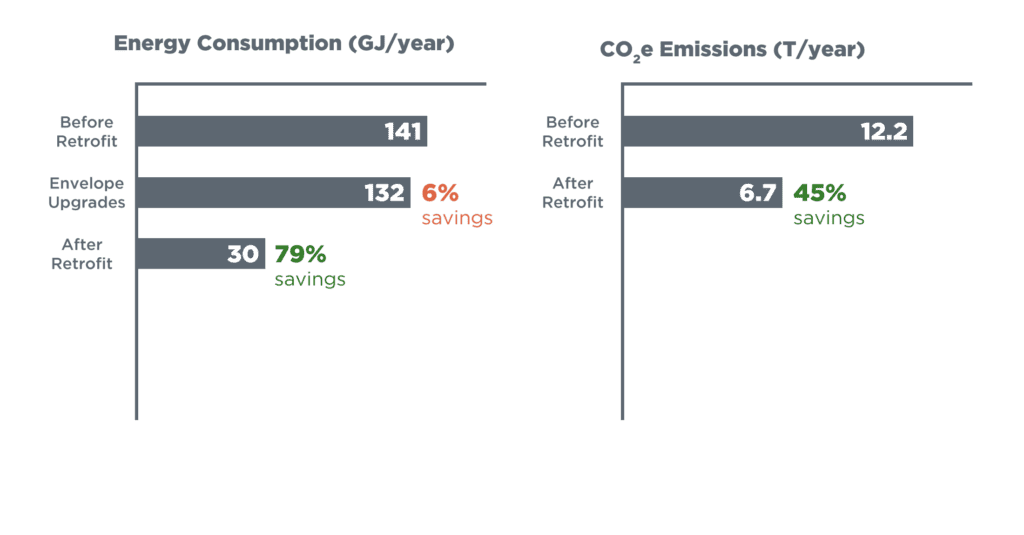
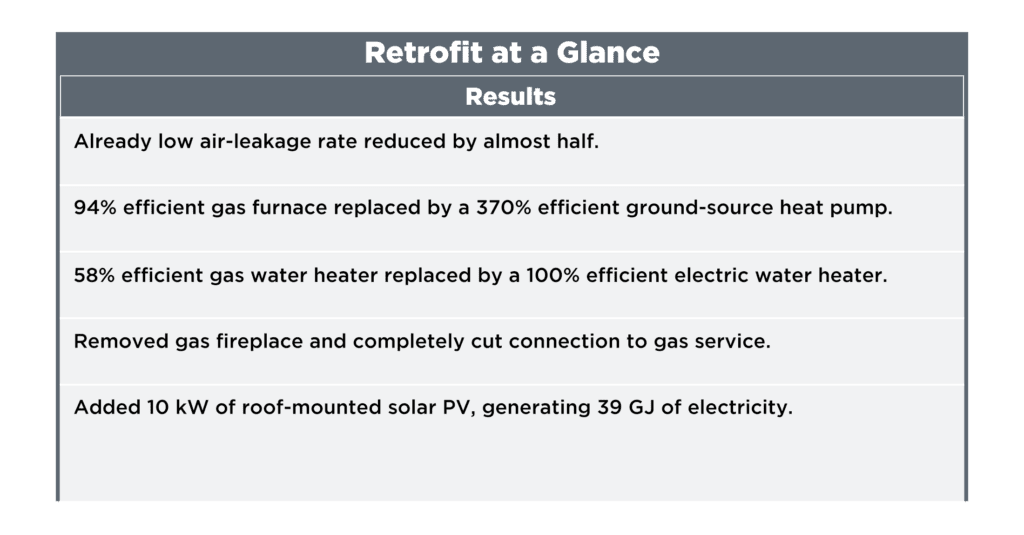
The Home Retrofit Journey
Caron and Huckabay started the retrofit project with an EnerGuide evaluation with the goal to improve the home’s energy performance on a small budget without breaking open walls.
The 2010-built, ~220 m² (~2400 ft²), home had a decent amount of insulation owing to the building codes at the time of construction. So, the first step in the renovation was to apply AeroBarrier to the house’s air barrier. This building envelope sealing technique uses positive air pressure to apply an aerosolized water-based sealant into cracks in a house’s air barrier. This step alone reduced the leakiness of this home by 45 per cent.
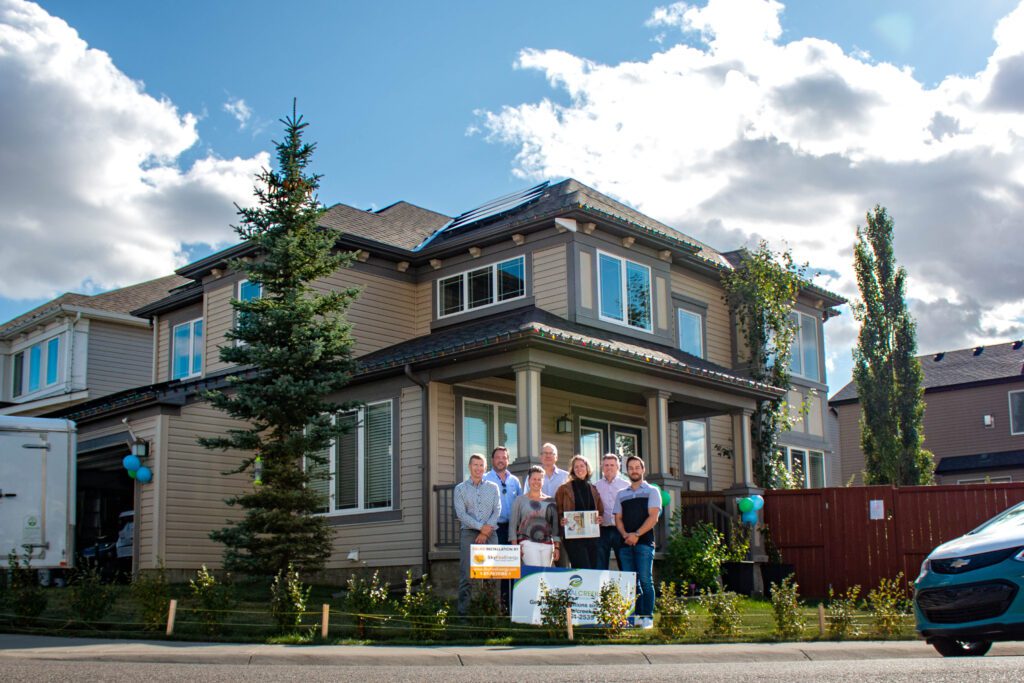
The couple posed in front of their house with members of their retrofit team.
In November 2021, the homeowners’ gas hot water heater tank broke down. The homeowners grabbed the opportunity to replace it with an electric water heater with a larger tank.
When their old gas furnace also showed signs of a breakdown, they did a quick fix for the furnace to last through the winter and until they could replace it by installing a geothermal heat pump.
In April 2022, they dug deep borewells in their backyard for the geothermal well. While they encountered some issues with groundwater in the process, the installation was a success.
The couple wrapped up their home retrofit project with the installation of solar photovoltaic panels in September 2022.
Caron notes that the waitlist for solar installations due to the popularity of the Canada Greener Homes Grant rebates, having to wait for the availability of the borewell drill and the delay to get three electrical permits affected the timeline of the project. In her opinion, it could’ve been a short five-week project!
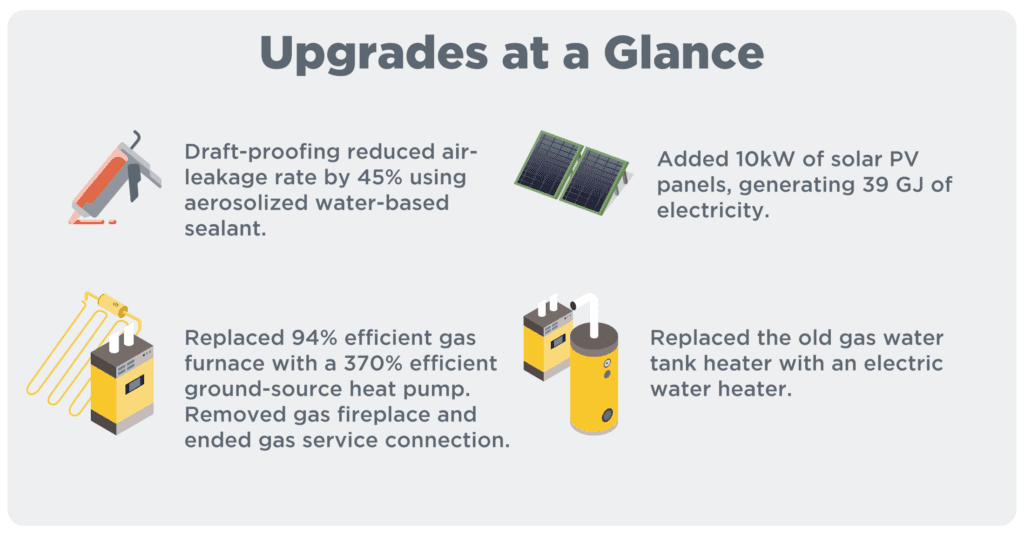
The Retrofit’s Benefits
The couple observed that AeroBarrier significantly dampened outdoor noise. The draftproofing also helped tackle condensation issues that caused water damage in the attics of many neighbouring houses of similar build.
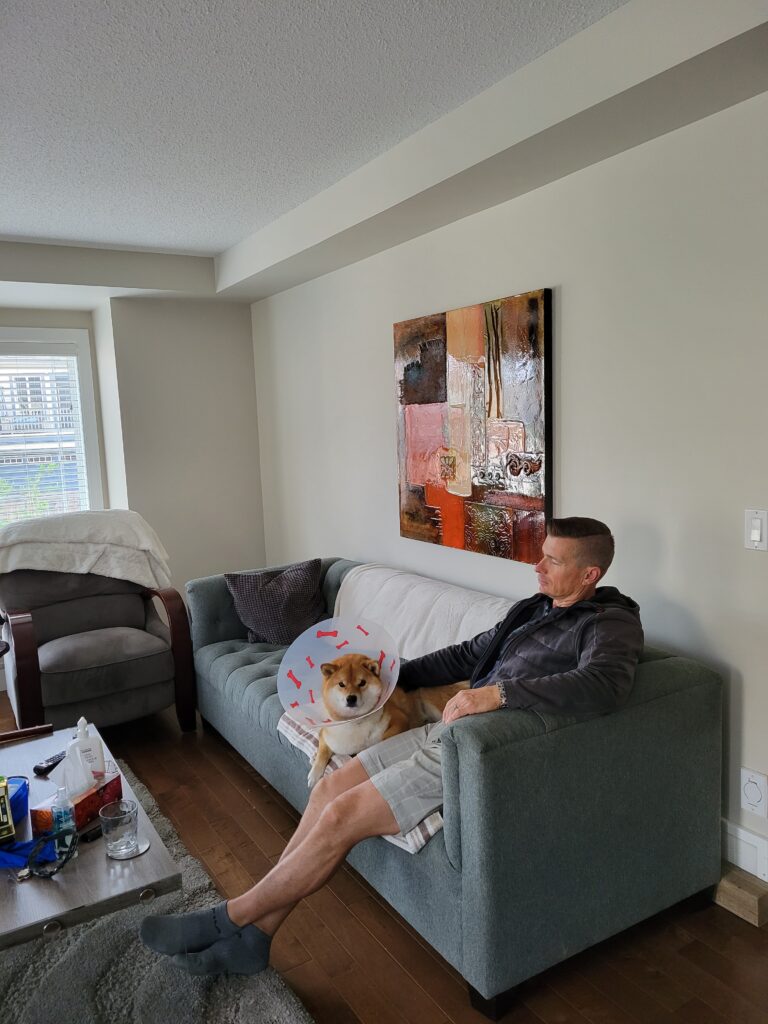
Huckabay on the couch with their Shiba Inu, who is wearing the cone of shame.
Financial and Climate Goals
Huckabay and Caron paid for their project by attaching a renovation loan to their new mortgage. The couple also took out a bank loan to pay for their solar panels.
After their final post-retrofit energy evaluation, Caron received a $5,000 rebate for their heat pump. The couple also got a few hundred dollars from Canada Mortgage and Housing Corporation’s (CMHC) Eco Plus 25 per cent partial insurance premium refund program.
When it came to utility bills, the ground-source heat pump completely offset the couple’s natural gas cost.
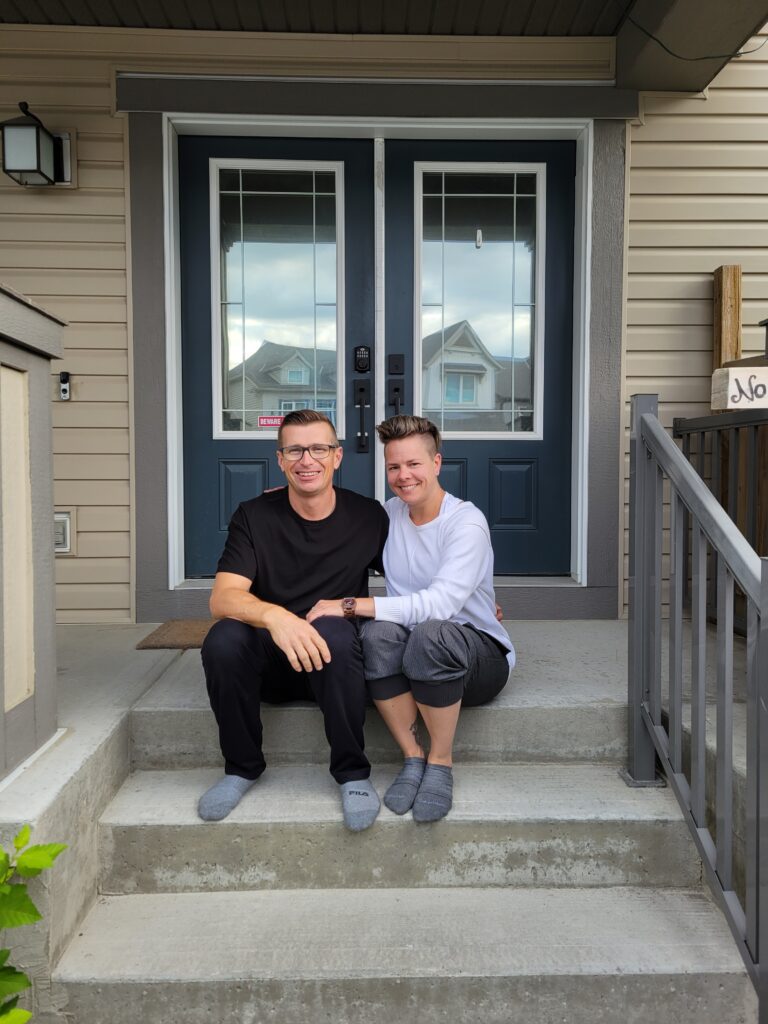
Huckabay and Caron sitting on the front steps of their newly retrofit home.
“Even though I’m running electric—which is more expensive than natural gas—because of the higher efficiency of the system, I still saved $150 off my worst month from the previous year. Even if we didn’t install the solar, and we just swapped the natural gas for ground-source [heat pump], we’re still a hundred bucks ahead every month, so we save an extra $1,200 a year,” Caron notes.
The home started generating more electricity than it used just before the first summer after they installed a solar PV system.
“I like the science of all this. Ultimately, a house that is built for comfort will be an energy efficient home and will have a positive impact on the environment,” Caron concludes.
The home started generating more electricity than it used just before the first summer after they installed a solar PV system.
“I like the science of all this. Ultimately, a house that is built for comfort will be an energy efficient home and will have a positive impact on the environment,” Caron concludes.

Recent Comments